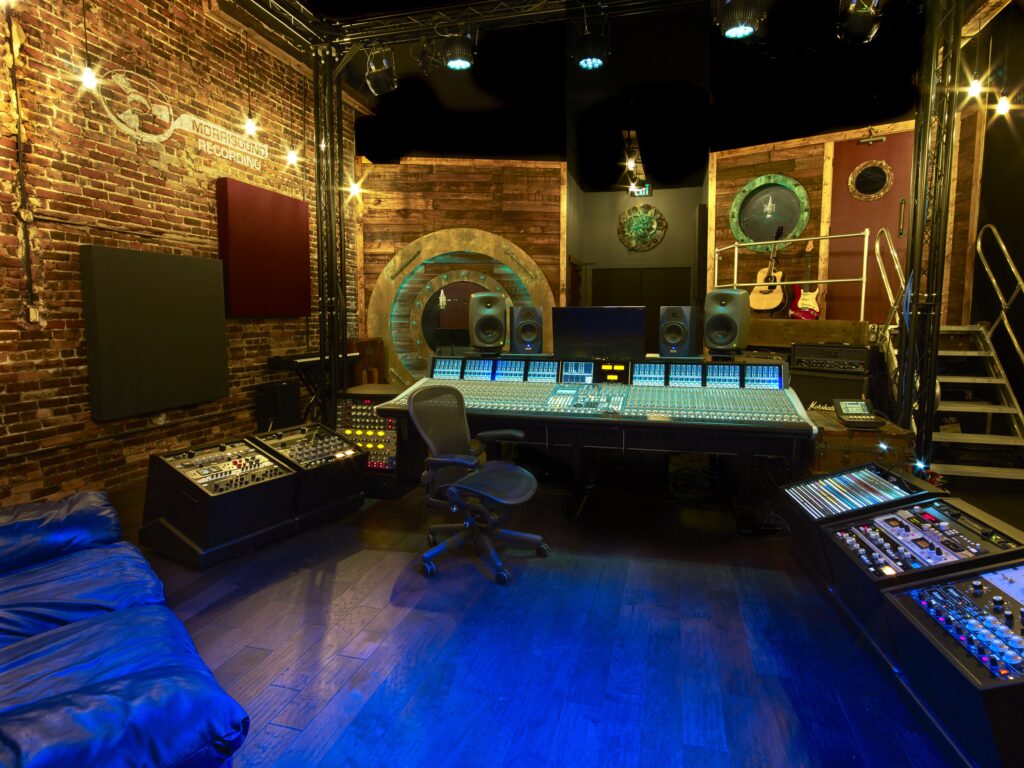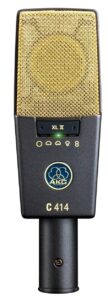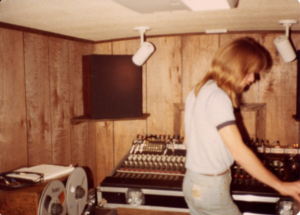Posted by Jim Morris on May 16, 2019
Over the past 15 or 20 years, the recording industry has undergone a paradigm shift, in process and procedures.
In the past, a truly professional recording studio required many large, expensive equipment choices: multitrack tape machines ($55,000 or more, each the size of a washing machine, weighing in at around 400 or so pounds), large format mixing consoles (from $50,000 to $800,000 and more, up to 15 feet long and weighing as much as a small car), racks and racks of outboard processing gear (EQ’s, compressors, reverbs, delays, and more, each likely ranging in the thousands of dollars). Not to mention the physical, “brick and mortar” building for the studio itself. Recording procedures were limited by the constraints of the technology available. The traditional setup involved a studio room where the majority of the musicians would perform, some isolation rooms for separating individual players and singers, and a control room to contain and isolate the enormous amount of gear required. Every session was preceded by an hour or so of tape machine cleaning and calibration, in addition to cabling and microphone setup and placement.
Every session was followed by an hour or so of tearing down that same setup, coiling cables, labeling tapes, clearing console settings, and more. The next session, we would do it all again, even though no two sessions were ever the same. The physical limitations of the equipment and required methods meant that the engineering production staff and basically remained in the control room, observing the artist through large glass windows and/or CCTV cameras, and communicating through microphones and speakers, similar to using a two way radio. If you had a session to record a single vocal track on one song, ALL of the studio was required, except the mics and cables for other players. Obviously, this worked effectively, in spite of the inherent awkwardness of the methods.
Fast Forward to today’s methods. Recording equipment has become smaller, cheaper, more portable, and more scalable. When you need to record a single vocal track on one song, you now only need a single microphone, a microphone preamp, and an audio interface connected to a computer with quality software for that purpose. As long as you can find a nice sounding room to work in, you can do this anywhere, the gear will fit in the front seat of your car, and could conceivably cost less than the cost of one channel of the conventional analog recording console. Recording has come to the masses!
After Tom and I sold our 56th street studio, we still had many projects we were working on. We had some good friends still in the studio business that provided working spaces for tracking, overdubbing and mixing while we searched for a building of some sort that we could operate from. While we were looking, we ended up setting up a mixing facility in a living room. Needless to say, that can make home life awkward… We also spent quite a bit more time working from our clients home studios. Dozens of them. Anyone who has gone to the expense of setting up a professional quality home recording system can confirm that it can be tremendously versatile and fun, even with the inherent limitations of the equipment and acoustic space.
As we searched for a location and then created the next generation of Morrisound, we decided to try to incorporate into our design some of the inherent freedoms of the home recording revolution, while maintaining the technological sophistication required to provide the audio quality our clients have come to expect from us. The result is what we believe is a great synergy of technology and relaxed comfort. We still use a state of the art recording console, in this case, our Solid State Logic Duality, an extensive ProTools HDX system, and an extensive collection of outboard processing, but instead of completely isolating people from each other during the recording session, we placed the SSL directly in the main recording space. Immediately, you can feel that communication, so important in today’s collaborative environment, is natural and comfortable. Everyone involved in the session is in the same space, working towards the same goal: a great product. We did still include several isolation areas in the interest of audio fidelity during larger sessions, but the results of this overall design, that we like to call “Immersive Recording” have been fantastic. The old school “us versus them” recording studio setup has yielded to “We are all in this Together”.
One side benefit we didn’t really expect, is the advantage of mixing in a very large, great sounding space, substantially larger than the control rooms at almost every other studio we have ever recorded in, including our own 56th Street facility. Mixes have been translating extremely well to real-world listening environments, from car stereos to earbuds.
I know I will always have a fondness and perhaps a certain nostalgia for “the way we used to do it”, but this new design has been invigorating and quite frankly, tremendously FUN! We are really proud of the new Morrisound. Make sure you give us a shout, come by and see our new, “Immersive Recording” facility.



